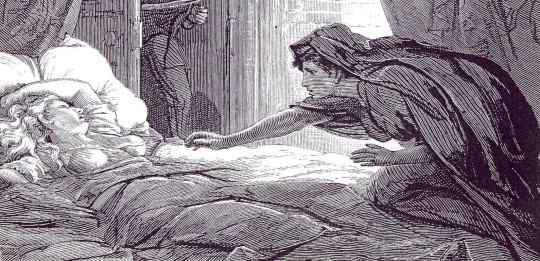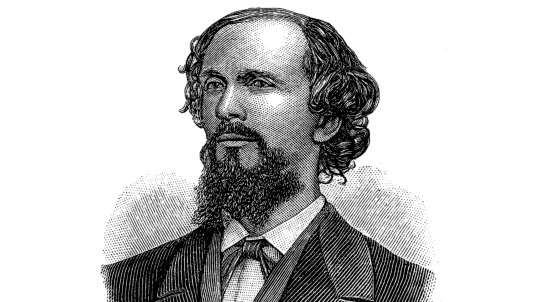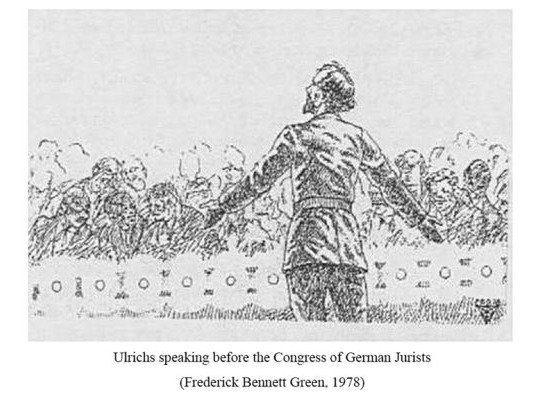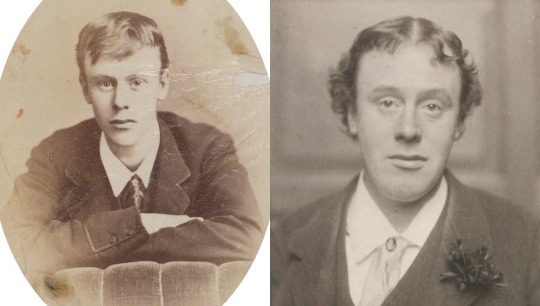#true story of dracula
Explore tagged Tumblr posts
Text

#interview with the vampire#what we do in the shadows#astarion#vampire chronicles#vampire the masquerade#anne rice#dracula novel#dracula#first kill#castlevania netflix#castlevania#queer vampires#vampires#carmilla#not quite dead#buffy the vampire slayer#supernatural#the hunger#daughter of darkness#true blood#american horror story#american horror story hotel#the vampire lovers#underworld 2003#lgbtq#queer media#pride#meme#lgbt memes#vampire memes
6K notes
·
View notes
Note
what are the card suits?
The card suits as commonly known are Spades, Hearts, Clubs, and Diamonds, but is was not always so. Various decks for many games and purposes have different suits including:
Tarot Cards- Swords, Cups, Wands, and Pentacles
Uno Cards- Red, Yellow, Green, and Blue
Credit Cards- Visa, MasterCard, Discover, and American Express
ID Cards- Driver's, Insurance, State, and Social Security
Sports Cards- Baseball, Basketball, Football, and Calvinball
House of Cards- Democrat, Republican, Independent, and Whig
Score Cards- Golf, Mini-Golf, Bowling, and Witcher Romance
Punch Cards- 100100100, 10101011, 10010, and 1001000101010111
Pokémon Cards- Electric, Grass, Poison, and Planeswalker
Orson Scott Cards- Ender, Alvin, Homecoming, and Ravenous Homophobic Bloggings That Sully His Entire Body Of Work
Hallmark Cards- Thank You, Happy Birthday, Condolences, and "Sorry I Got Semen In Your Eye" (yes I know that was a cake)
Alu Cards- Castlevania, Hellsing, Waverly, and no joke, my friend Alucard J***** from when I was in college at CU Boulder. We met because you could look up people by name on the school website like pre-facebook and spam bots and see their info and email and I looked up the name as a joke and there was one guy and I emailed him like "Dude your name is Dracula backwards!" and it turned out he's related to Bram Stoker and goes to these meetings of his family in Ireland each year and I went with him once and met this girl named Ryann and we hit it off and walked around talking way late into the night and then she turned into a bat and left and I never saw her again and when I went back to tell Alucard, there was no trace of him at college or anywhere else and it turns out Stoker's family all died off in the early 1900s. True story.
569 notes
·
View notes
Text
Queer lit of the 1800s: Two gay Victorian vampire stories you've probably never heard of
So, I have this post in the works tackling that all-important question: just why are there so many gay vampire stories? But in writing it, what was supposed to be a brief tangent about a couple of little-known m/m vampire stories from all the way back in the late 1800s era… started expanding into something not-so-brief, as such tangents are prone to do.
But what the hell, the internet tells me it's queer history month: clearly the only solution is to give those stories their own post, where my tangent can spin out as far as it likes!

Now, if you know anything about Victorian vampire literature or the lesbian vampire genre, you’ve probably already heard about Carmilla, by Sheridan le Fanu (1872), the world’s very first (known) lesbian vampire story. To this day, it's easily the second best-known and widely adapted tale in all the Victorian vampire canon (after Dracula, obviously) – and it probably deserves to be too.

But this is not a post about Carmilla, because Carmilla is not the only gay-vampire-story written way back in the Victorian era. It's not even the least subtle gay-vampire-tale.
There are (at least) two others, both featuring male/male vampire/human pairings. And whether or not they ‘deserve’ to be remembered in the same breath as Carmilla, they’re both fascinating works in their own rights: Manor, by Karl Heinrich Ulrichs (1884) – one of the world’s first gay activists – and A True Story of a Vampire, by Count Eric Stenbock (1894).
You can read both online. A True Story of a Vampire is long out of copyright and can be found on Gutenberg (Carmilla is too, if you're interested), and many other places. Manor has been translated into English only much more recently, but you can still get hold of it in pdf form, or buy it in ebook format. But if what you really want are some summaries, and/or whole lot of extra context and analysis to go with the stories themselves, I've got you covered below.
Manor (1884), Sailor Stories, and Karl Heinrich Ulrichs
We’ll start with Manor, since it was published ten years before our other example, and because I’m not quite cruel enough to leave you going "wait, did you really just tell me there was a legit gay activist writing vampire slashfic in his free time way back in the 1880s?" while I ramble on about the other story first. We'll start with the author himself, because his own story is at least as interesting as any fiction he ever published.

Born in Germany in 1825, Karl Heinrich Ulrichs knew from a young age that he was attracted to men. He trained in law, but wisely resigned before he could be fired in 1854 when his proclivities came to the attention of his superiors. Most in his position would've redoubled their efforts to hide; Ulrichs spent the next several years joining societies dedicated to science and literature and developing his own theories about non-hetero orientations, before officially coming out to his family in 1862.
He was just getting started. By 1867, he was ready to come out to the whole world.
Ulrichs is far from the first gay man to recognise his attraction without shame and find society in like-minded individuals ‒ but he may well be the very first to come out voluntarily and publicly, and advocate for the decriminalisation of homosexuality. And when I say "publicly" what I mean of course is, "in a formal address to the Congress of German Jurists." He was shouted down, but it was still a staggering act of bravery for a man of his time. It would still be a staggering act of bravery in many parts of the world today.

Undaunted by his reception, Ulrichs would also publish a dozen booklets advocating for rights for his community between 1864 and 1879, framing their sexuality as natural, inborn and wholly benign. In 1880, after multiple arrests for his political advocacy, he left Germany for self-imposed exile in Italy, where he would remain until his death in 1895. But it's during this period that he published some poetry, as well as Sailor Stories, a collection of four short stories inspired primarily by Norse mythology, including Manor (which we’ll get to, don’t worry).
Though Ulrichs saw little legal success in his lifetime, through modern eyes, his greatest failure might be only that he was so far ahead of his time. When he began writing and advocating, the word 'homosexuality' didn't even exist yet ‒ he himself used the term 'Urnings' for gay men, eventually coining terms for variations like 'Mannling' and 'Weibling' (gay male equivalent of 'butch' and 'femme') as well. He also came to recognise bisexuality, lesbian attraction, and even intersex conditions, theorising that all resulted from some combination of male and female characteristics developing in the same individual, as the available knowledge on embryonic development suggested might be possible. For a guy with only Victorian era science to work from, that's still remarkably close to the modern consensus today.
Nor did Ulrichs' work die with him. His writings would go on to inspire and be republished by gay rights movements that followed him ‒ including the work and advocacy of Magnus Hirschfeld, who created what may be the world's first trans-affirming clinic. Even in his own time, responses from his own readers show much his work meant to them, reassured at last that they weren't alone.
So how does a German activist from the 1880s find himself publishing gay vampire fiction based on Norse mythology while living in exile in Italy? I only wish I knew. My sources suggest his main goal with Sailor Stories was to publish something that would sell. Unsurprisingly, given the subject matter it seems to have sold very little. Manor is the third of four short tales, and by far the gayest of them all. It's also (IMHO) by far the best, and the most interesting.

Set in a Norwegian fishing village, Manor tells the story of the romance between a 15-year-old boy called Har, and the titular Manor, a sailor 4 years his senior, who rescues Har from the wreck which killed his father. In the days that follow, the pair become close, and Manor takes to swimming across the bay on summer evenings to visit Har at his home. And so they meet whenever they can, until tragedy strikes again, and Manor is killed in a shipwreck near the coast, leaving Har inconsolable with grief.
But this being a vampire story, in the nights after Manor’s death, something is seen swimming across the bay to Har’s home, just as Manor used to do. Har is visited night after night by the spectre of his beloved, who lies beside him in bed, strokes his cheek with cold hands, and kisses him with icy lips, draining his blood from his heart, "like an infant at its mother’s breast." Har himself awaits each night with mixed joy and fear, longing to see Manor again, even in such a form.
As Har weakens, the villagers attempt to trap Manor in his grave by hammering a stake through his body, but he continues to visit Har nonetheless, now sporting a gaping wound in his chest. The villagers return with a new stake, widened at the base like a giant nail, and finally, Manor is restrained in his grave. But it’s too late for Har: weakened and heartsick, he dies, begging only that he should be buried beside his beloved at last. Neither rise again.
Though I can’t speak to how it reads in the original German, in translation, Manor is relayed in largely workmanlike prose. Its tale is short, simple, and sad – but so much about it fascinates me all the same.

(Draugen, Theodor Kittelsen, 1891)
There’s the incorporation of elements you might better recognise from Norse draugr folklore – revenants more typically associated with deaths at sea, or charged with guarding their own graves ‒ but still far more closely related to the vampires of Slavic mythology than most people probably realise. Manor is also one of painfully few stories which clearly recognises what is surely the original purpose of hammering a stake through a vampire’s body: not to kill it, but to hold the creature down and prevent it from leaving its grave. As a hopeless vampire-nerd (I've presented panels at conventions about this stuff, it's dangerous to get me started), I can’t tell you how much I love those aspects of this story.
But above all, Ulrichs’ tale captures what might be one of the oldest and most traditional versions of the folkloric vampire: the spectre of a lost loved one, and the potent mixture of fear and twisted longing thus inspired, that the weight of their loss might drag you down into death to join them. Many ‘real’ tales of vampirism have been inspired by outbreaks of wasting diseases like consumption, working their way through a family, one member at a time. But in Har’s case, it is clearly grief as much as Manor’s physical visits that claims him. He loves Manor so much that he welcomes his lover back, even as a revenant. In his own way, Har too is cursed by Manor’s death to wander the world like the walking dead, until finally reunited with his lover once more.
Nowadays, tragic love stories like this tend to get an eye roll from a lot of the queer community. The old ‘bury your gays’ trope has been done to death, and we’re largely sick of being told that noble suffering is the best we can hope for. But it’s notable nonetheless that Manor’s sexuality has no bearing on his death, and little about the story would change were Har female. It's far from clear if the rest of the village even recognises Har and Manor's love for what it is, let alone whether they'd disapprove ‒ after all, vampires will often go after friends and acquaintances when lovers and family members are exhausted. As such, it’s hard to read the village’s attempts to keep Manor in his grave as a simple matter of prejudice. They're also genuinely trying to save Har's life.
And yet, the way Har keeps the undead Manor’s visits a secret, even begging for the stake to be removed so they can resume, echoes the real experiences of so many gay and lesbian couples far too clearly to be accidental. And however disturbing to a contemporary audience, Har’s willingness to follow his lover to the grave leaves little doubt of the depths of his feelings. To an audience in the 1800s, even the most cliched example of bury-your-gays would be revolutionary.
Did I mention that this story fascinates me? There are layers to this thing.
For completeness, I’ve also read the rest of Sailor Stories (and you can too at the same link). Only one of the other three tales contains any queer romance: the first, Sulitelma, where a boy called Erich falls for a handsome sailor called Harald he meets aboard a spectral storm ship. But there's no happy ending: his sister falls for the same handsome sailor, and shoves Erich overboard to his death to eliminate her competition.
Atlantis, the second story in the collection, is a direct sequel to Sulitelma, but it's even more bizarre. Erich is barely mentioned, and instead we find ourselves reading a tale which I can only summarise as like something I might have found on fanfiction.net back in the early aughts, written by some 14yo trying to straightwash the original material. Here, Harald and some of his fellows go on shore leave to the land of the phoenix, populated by Greek nymphs and Cupid, and mildly comedic hijinx ensue. It is fascinatingly bizarre, but not exactly satisfying as a read (or a sequel).
The final story, The Monk of Sumboe, tells of how two close friends destroy their relationship and themselves with their fixation on the tale of an alluring siren. There's a solid concept in there somewhere, but it's far too short and abrupt to do much with it, and all the characters remain strictly heterosexual. But if there's one thematic detail that ties it to the rest of the collection (beside the many Norse elements), it's that hopeless longing for something others would warn you away from ‒ whether that be a phantom ship, a visit from a vampire lover, or an elusive siren. None of these tales end well for their protagonists, but we're drawn to sympathise with them nonetheless.
I cannot guess what reception Karl Ulrichs expected in publishing this book. Sailor Stories is neither a work that could expect good reception from mainstream audiences or a defiantly-radical queer masterpiece. What did people make of it in its own time? Was it read and cherished by at least a few boys or men like Har and Manor? I’d hope so, but I’ll probably never know.
If you'd like to read more about Karl Ulrichs, I can recommend (among my sources) this New York Times article for a quick overview of his work, or the various work of Michael Lombardi-Nash and Hubert Kennedy (link 2). You can also read the first chapter of his published correspondence online for free.
A True Story of a Vampire (1894), and Count Eric Stenbock
Our second Victorian vampire tale was first published in English, though it was written by a Swedish Count. Like Carmilla in its own day (and quite unlike Karl Ulrichs), both story and author seem to have flown largely under the radar until many years after publication, the queer subtext little noted or commented upon (if at all).

If nothing else though, A True Story of a Vampire aptly demonstrates that at least someone of that era spotted what Carmilla was really about – because he wrote his own version, only about men. Stenbock’s tale is effectively a much shorter, gender-swapped version of Carmilla – but with a larger age gap between vampire and victim lending the story uncomfortable pederastic overtones.
"Vampire stories are generally located in Styria; mine is also," it begins – though I couldn’t name you any vampire story from the era besides Carmilla set there. The narrator, the surviving sister of the vampire’s victim, is called ‘Carmela’, if you needed further proof.
Much like in Carmilla herself, the vampire, Count Vardalek (a Slavic term for vampire) arrives at their house after being forced to seek local hospitality when some convenient ‘accident’ interrupts his travels. There, he bewitches and slowly drains the life from her brother, Gabriel – a boy described in terms variously angelic and fey, a wild thing who befriends wild animals and would rather climb a tree to a window than take the stairs to his own room, but who cleans up beautifully for church – a sublime, cinnamon roll of a creature, far too good for this sinful earth, too pure. Gabriel is a true male equivalent of the likes of Dracula’s Lucy, feminised further still by his youth and innocence. Had a vampire not got him, one can only imagine he’d have eventually have been spirited away by the fairies.
Gabriel and the mysterious Count are drawn to one another immediately. Even as Gabriel wastes slowly away, he greets Vardalek eagerly each time he returns by throwing his arms around his neck and kissing him on the lips. Count Vardalek himself seems to be a vampire of the psychic variety, gaining in health and vitality while Gabriel wilts, merely after spending time in one another’s presence. Vardalek himself seems to genuinely regret Gabriel’s inevitable death, but unlike in Carmilla, there’s no rescue at our conclusion. Gabriel dies, and we’re given no reason to assume he’ll rise again.
To the modern reader, the true horror of this tale lies not with the vampires or even the homoeroticism, but with those uncomfortably pederastic implications. Gabriel can’t be more than twelve years old, his youth and innocence emphasised in his every description. Pains are taken to suggest that Gabriel’s own attraction to Vardalek is as much responsible for his fate as the vampire himself. Gabriel’s father is similarly bewitched by this charming stranger, and never recognises the danger, or the reason for his son’s tragic death. Even the narrator, his loving sister, cannot truly hate Vardalek for taking her brother from her – even when her father dies of grief soon after. Gabriel’s fate seems sealed from the moment the Count enters their home.
But knowing how often real child molesters get away with it, their actions excused or downplayed by their family, their victims accused of ‘seducing’ their abusers and made complicit in their own misery… I can only say that, for my money, A True Story of a Vampire is a very effective horror story in ways the author probably never intended, once you start to question the reliability of its narrator.

It won’t surprise you to learn that the author, Count Eric Stanislaus Stenbock, was a (very) gay man, deeply involved with the gothic and decadent artistic movements of his day. Born to a Swedish Count and an English heiress, Stenbock seems to be remembered less for his writing than for his character. In The Oxford Book of Modern Verse, 1892-1935, W.B. Yeats describes him as a "scholar, connoisseur, drunkard, poet, pervert, most charming of men" ‒ naming Stenbock as an exemplar of the poetic zeitgeist of the age. Notably however, none of Stenbock’s actual poetry is featured in the volume.
Stories about Stenbock are so bizarre that it’s hard to know how much should be believed. Eric Stenbock supposedly travelled with a multitude of exotic pets and a life-sized doll he referred to as his 'son', dabbled in religions ranging from Roman Catholicism to Buddhism, and decorated his dwelling with peacock feathers, oriental shawls, a bronze statue of Eros and a hanging pentagram. One acquaintance once compared him to a 'magnified child': "very fair hair beautifully curled, and a blond, round, blue-eyed face," who paused at the door and "took a little phial out of his pocket, from which he anointed his fingers, before passing them through his locks." But by his thirties, he was already dying of liver disease after years of alcoholism. He passed away at only 35.
Stenbock’s surviving artistic legacy consists of three volumes of poetry and one of prose, with some of those poems including explicit references to Ganymede or male lovers. So how did he escape the same controversy that dogged similar works by other queer creatives of his day, like Oscar Wilde or Walt Whitman – let alone Karl Ulrichs? Well, simple: his work never attracted enough attention to generate real controversy. Stenbock may have been just as much a character as figures like Wilde, but he hadn't nearly the same talent or success.
One last minor biographic detail that may be worthy of note (discovered courtesy of some very poor-quality scans of his one proper biography) is that the youthful Gabriel of A True Story of a Vampire may owe his name to a real Gabriele ‒ a female cousin ten years Stenbock’s junior, whom he would've spent time with in his teens, and seems to have been especially fond of. Whatever the true significance of that name, he'd use it more than once in his fiction: another short story, The Other Side: A Breton Legend, also stars an angelic little boy called Gabriel, with a similar dangerous attraction to the strange. It features some lovely mood and imagery as it sets the scene, but (perhaps as a result of the lack of a suitable model story like Carmilla) it is, in my opinion, a much weaker story overall.

But again, the most disturbing aspect of Stenbock's biography are the hints about his own relationships with much younger men. His second book of poetry, Myrtle, Rue and Cypress, is dedicated to three people: Simeon Solomon (a gay painter of the pre-Raphaelite movement, whom he met at Oxford), Arvid Stenbock, Eric's cousin, and to "the memory of Charles Fowler" ‒ the son of a Clergyman, who died of consumption at only 16.
This enigmatic dedication is all we know about Stenbock's relationship with Fowler. We don't even know how the they met (Fowler seems to have had a relative at Oxford at the same time as Stenbock, but even this is speculation). But that dedication, in a book which will go on to feature poems about the beauty of Ganymede, or explicitly addressed 'To A Boy' (Tis ever a delight, dear, To gaze upon thy face, To love the life within thee, Fair fashioned, full of grace) makes it hard to read Stenbock's feelings as remotely platonic.
It doesn’t help that the same volume includes a poem about an actual vampire, published ten years before A True Story of a Vampire would ever be penned, but with very comparable subject matter:
With slow soft sensual sips Draw the life from the tender spray, And brush from thy soft lithe lips The bloom of thy boyhood away
It's worth keeping in mind that Stenbock himself would've been only 21 at the time of Fowler's death, and that we don't know whether he ever acted on his attraction (whatever form it may have taken). He may well, as I've seen suggested, have kept his admiration private, idealising the image of the beautiful, dying boy in his final days, in that classic Victorian-gothic way. But it doesn't help that Stenbock's cousin Arvid, from that other dedication in the same book, was 8 years his junior, and that their family apparently disapproved of their relationship as "unnaturally close." Or that another famous Stenbock-associate was Norman O'Neil, a composer whom he met on a London omnibus in 1891, when O'Neil too was only 16. Stenbock was apparently taken by his intelligence and beauty, and would go on to leave him a considerable sum of money in his will. By 1891, Stenbock would've been 31, but his fixations hadn't aged with him.
So how are we to take all this? This was an age where a marriage between a 16-year-old girl and a suitor of Stenbock's age would scarcely have raised eyebrows. Uncomfortable as it may sound today, for many queer youths of the era, a romance with someone older and experienced enough to play mentor may genuinely have represented the safest real option available. There are layers of complicated subtext, meanwhile, in the idea of any gay man of the Victorian era casting himself as a vampiric monster, doomed to ruin the object of their attraction with their very touch. There may be layers more in Stenbock framing his tale as "A true story" before telling us of the misery a foreign Count brought to an innocent family, with his helpless fixation on their youngest child.
It's worth noting also that even in Manor, by Legit Gay Activist Karl Ulrichs, our love story is between a boy of 15 and a man of 19 ‒ an age gap of only 4 years, but large enough at 15 to raise some serious eyebrows. His first story too, Sulitelma, involves attraction between a man and a boy (exact ages unknown). Though Ulrichs explicitly viewed relationships with prepubescent children as reprehensible, he seems to have had no problem with relationships between young teens and much older adults ‒ even printing a story sent in by a reader (details in this article), joyfully recounting how he (the reader) was initiated into the world of male/male love as a 14-year-old by his brother's riding master. Ulrichs saw no reason to disapprove.
To confuse things for anyone looking this up today, google Ulrichs, and you'll find a number of online articles claiming that his own first experience involved being sexually assaulted by a riding instructor when he was only 14. This is wrong on multiple fronts: not only is the story related by Ulrichs as a positive experience, it wasn't even Ulrichs it happened to. No, shit like this would not be okay if it happened today (and frequently wasn't then), but we don't help ourselves by distorting the stories told by our queer forebears to fit modern expectations.
But none of that surrounding context makes the youth of the day any less vulnerable to predation, or Stenbock's fixation on youthful beauty less creepy. Today, no evidence remains to help us guess whether idealising the beauty and innocence of youth was the greatest of Stenbock's actual crimes, or the least of them. Anything is possible.
In brief: welcome to the joy of trying to reconcile the complicated place of pederasty in queer history! I'm afraid you can look forward to seeing a lot of it from here on back.
A True Story of a Vampire is not a bad work of fiction by any means. There are some lovely descriptions and entertaining turns of phrase, and the horror is certainly effective. It may even be considerably more readable than Carmilla to many, simply for being so much shorter. But how you feel about it is really going to be up to you.
One last digression about Carmilla and Christabel
There’s one additional work that I’ve once or twice seen listed as an even earlier queer vampire tale: Samuel Coleridge’s unfinished poem Christabel (1800) – the only problem being there’s no vampire in the story (and how queer it is may be questionable too).
Like Carmilla, Christabel tells of a Baron’s daughter (the titular Christabel) who comes upon a mysterious stranger in apparent distress (Geraldine) and invites her into her home. We never learn what kind of being Geraldine truly is (three further parts were planned in addition to the two that were completed), but when she undresses, Christabel spies something that horrifies her, remembering it later with the words "Again she saw that bosom old / Again she felt that bosom cold." But under Geraldine’s spell, Christabel’s recollection of this incident comes and goes, and Geraldine has soon bewitched her father too.

All ‘evidence’ that Geraldine was intended to be a vampire rests on such details as Geraldine having to be carried past an iron gate into the house, much as vampires have to be invited in – but that particular vampire trope wasn’t actually codified until a solid century later (like most vampire-tropes, we have Stoker's Dracula to blame). The idea that Geraldine has the cold, shrivelled body of the undead and revives herself on Christabel’s blood is a perfectly valid reading, but the more obvious interpretation would be that she’s some manner of shapeshifting fairy creature, weakened by the iron of the gateway, not the entrance to Christabel’s home. The aristocratic literary vampire had existed for over 40 years and appeared in numerous works of fiction by Carmilla's day; but Christabel predates the origins of the genre a solid two decades. For Coleridge to have come up with the idea independently seems vanishingly unlikely.
I mention Christabel here partly for completeness, but mostly to bring us back around to the greater family of Carmilla, which is still legitimately the first known queer vampire story. Though far better known than any other story discussed here today, how it came about is perhaps the most mysterious.
Sheridan le Fanu was a prolific writer, but I don’t know of any other story he’s penned with subtext like Carmilla's (and I’m not quite invested enough to read all of the rest to check, though someone totally should so I don't have to). Le Fanu was married, and had children, and that's all I can discover about his personal life. Was he some shade of queer himself? Did he have connections to anyone who was? Did he even realise what he was writing with Carmilla? Nothing I’ve read about him provides any answers. Nor can I tell you how many readers spotted the subtext it the story was first published. In its own time, it caused no great scandal, nor even seems to have garnered much attention (by contrast, Byron & Polidori's The Vampyre caused an uproar when it was published in 1819, mostly thanks to Byron's established fame and debates over its true authorship). It took until well into the 20th Century for it to obtain the reputation it has today.
But I’m sure it’s no coincidence that it was Carmilla that spoke to Stenbock enough that he chose to retell it. And while A True Story of a Vampire is still the only other vampire story of the era set in Styria, there was almost another one: Dracula, at least Stoker’s early plans for the novel. Styria also remains part of the unused prequel chapter later published as Dracula’s Guest. The setting isn’t the only detail Stoker nearly-borrowed from Carmilla either, my favourite example being the weird schedule by which both she and Dracula seem to have to be in bed in their coffins at dawn each day, both apparently helpless and immobile in sleep, though both are also repeatedly seen up and about later in the day. Neither tale offers any real explanation.
Have I mentioned lately that Stoker, too, was almost certainly some shade of gay?
Now, the fact that two different queer writers both found Carmilla so very inspiring – and would even both publish their own works of vampire literature within five years of one another – isn’t much to go on, in trying to establish what a story like Carmilla might’ve meant to England’s queer population some twenty years after it was written. Maybe Carmilla was being eagerly passed around London’s own Uranian gothic societies at the time. Or maybe two different men happened upon it by chance in wholly different circumstances, and took very different things from reading it. Maybe Stoker didn’t even notice the queer subtext himself. But I can’t help but wonder if just maybe, there's something more than coincidence at work here.
Carmilla the vampire is an explicitly villainous character, her victim confused and unwilling. But she remains one of the most complex and sympathetic vampires of her era. And perhaps, to a community who had never seen Ulrichs’ writing published in their own language, and might never see themselves represented in fiction except as monsters buried in layers of protective subtext, that still meant something to readers like Stenbock, and Stocker, and who knows how many others.
In short, maybe old, gay vampire stories like these really are worth remembering. I'll leave that one up to you.
#queer history#vampires#Dracula#Manor#Karl Heinrich Ulrichs#A True Story of a Vampire#Count Eric Stenbock#Carmilla#gay vampire stuff
63 notes
·
View notes
Note
i adore your bad end series! with the most recent post, i have to wonder what little quincey considers dracula to be. his weird uncle? his parents' "friend?" a spooky roommate?
Ah yes, the vampire lord in the corner.
I’m going to tag @unchartedentity for this as they asked a very similar question!
So, @animate-mush who’s wonderful writing keeps inspiring this series to new heights has had Quincey call him “Father” in parallel to Jonathan’s ‘Papa’ and yeah I can definitely see Dracula pressing for that title, both by his ‘right’ as the reason the child is a vampire in the first place “He owes what he is as much to myself as to who’s blood he shares. And doesn’t some of mine run through him now as well?”
And also just because he knows it’s a knife in Jonmina’s hearts to hear Quincey call him that
How the relationship actually pans out? I think that in actually it’s much more of a creepy weird uncle situation, mixed with a lot of Palpatine corruption attempts. Dracula finds Quincey’s whole existence deeply interesting, seeing the Harkers attempts at domesticity is incredibly bizarre to him and also humorous—I think he really feels at some moment Quincey will twist into proper Vampire mode and break his dear papa’s heart doing so, and robbed of his chance to take over England he’ll take his kicks where he can get them.
Also going to take this opportunity to post the Dracula and Quincey interaction I just drew

#evil undead man does not understand the power of True Love#both romantic and paternal#he thinks they’re treating a wolf cub as a puppy#and one day it will turn and bite them#but also he very much wants to use this particularly well bred wolf for his own purposes#a vampire that can grow and learn and isn’t bound to his home soil?#the possibilities are endless#baby Quincey just wants to hear cool old stories#dracula bad ending AU#count dracula#Quincey Harker#Jonathan Harker#Dracula#Dracula daily#(after this I really gotta finish Quincey Time Travel AU and latest commissions xD)#blood of my blood
172 notes
·
View notes
Text
The question is, did Van Helsing contact Mina purely because of her friendship with Lucy, or did something in her correspondence with Lucy make him suspect that she and/or Jonathan had had some contact with the Count? Maybe she mentioned Jonathan's visit to Transylvania?
#dracula daily#dracula#thoughts#abraham van helsing#mina murray#also mina's diary entry is ADORABLE#'my husband wrote this insane sounding story#either he had some bizarre hallucinations#(probably from all that paprika hendl)#in which case i'll be there to comfort him when he needs it#OR it's all true#in which case we shall have to prepare to warn people so i'd better get my typewriter ready'#all queued up
64 notes
·
View notes
Text

This story is hilarious, I fucking love Bela
#bela lugosi#dracula#i have to believe this is a silly not quite true story he told to be funny#but i can see him reading the script and being confused for a few days maybe not 6 whole months
81 notes
·
View notes
Text

This gif goes with any song. Btw
#me listening to Bodies while i clean the men's bathroom. true story#kim dracula#jamiroquai#everything#i love these little guys#jay's bullshit
18 notes
·
View notes
Text
wait hang on it's actually so funny that both twilight (self-admittedly) and dracula (very VERY allegedly) might be the results of the author having a weird dream about the vampire guy expressing their desire for the protagonist
#well. one of the protagonists (Jonathan)#the story abt stoker's dream came from a relative of his iirc so take with a grain of salt#but it would be so funny if true#dracula#twilight#dracula daily#Dracula spoilers#dracula daily spoilers#.......i guess#like. someone might be joining this year and not yet aware that Dracula gets kinda weird about his English solicitor? in theory#anyway#people are people across the ages and that's charming to me#sometimes you have a semi-horny dream about vampires and it inspires you apparently
13 notes
·
View notes
Text
i love being a lesbian i can start thinking too hard at ungodly hours and end up w plans for a podcast
#what does this have to do w being a lesbian you ask? um. runs away cutely#i am under no impression that the podcast will actually get made. mostly bc i would have to write it first unfortunately#but if i did it would be a silly little bunch of stories about a early twenties woman moving to a weird fucking town and also there’s magic#and lesbians. one of which is my beloved maria <3 who lives on a boat now#also ghosts. this town harbours a frankly unlikely number of both ghosts and lesbians#it is part ‘write what you want to see in the world’ part ‘i miss home so much’ and part ‘fucked up if true!!’#tbh it wouldn’t have to be a podcast i could just like. write it normally. maybe do it like an email dracula daily type thing#i just like. Podded Casts <3#morganposting
9 notes
·
View notes
Text
Me taking a shower: *in peace, vibing, washing off the nasties*
My brain: hey ya know with all the fun ppl have with insane Dracula spinoffs and with gothic cowboys, we haven't seen any "Quincy is turned instead of dying" yet. It must have been done before, right? It sounds over the top but in that funny way that suit's Quincy's shenanigans, and it also has loads of angst potential. Just a lone cowboy and his sun-down adventures
Me: hmm yea that seems neat
Brain: Yea. Oh btw we forgot to turn on the stove lol
Me: Shit-
#based on a true story#but rlly i wonder if it is a good idea or if it suits his character#in any case just a for funsies passing idea#dracula#dracula daily#me rambles
17 notes
·
View notes
Text
the beauty of adhd is that you could wake up one day with no expectations and then five hours and a trip to michaels later your binding your own notebook
#true story#this is gonna be my whole personality#i’m gonna be insufferable#adhd#book binding#i’m gonna convert my paperback dracula to hardcover#i’m gonna make the cover white and then stain it red so it looks bloody
26 notes
·
View notes
Text
My media this week (22-28 Sep 2024)

📚 STUFF I READ 📚
🥰 Before Midnight (Nero Wolfe #25) (Rex Stout, author; Michael Prichard, narrator)
🥰 The Golden Age of Murder (Martin Edwards, author; Leighton Pugh, narrator) - in-depth look at The Detection Club members during the 'Golden Age of Detective Fiction' (between the world wars)
😍 Pizza-verse series (Closer) - 65K, Suits AU where "in an alternate universe, Harvey's still the best closer in New York but Mike's not a runner for Trevor: he's a pizza deliveryman, Harvey's favorite pizza deliveryman. And Harvey's discovery that Mike's more than he lets on will change everyone's lives… told and retold through Mike, Donna, and Harvey's point of view, with new scenes and reactions each time." - absolute banger series, love it so much
💖💖 +170K of shorter fic so shout out to these I really loved 💖💖
Only the Good Die Young (ZenaidaMacroura) - MCU: shrunkyclunks, 23K - excellent shrunkyclunks with EMT!Bucky/Cap!Steve who are both absolute awkward disasters
t'aimer sur les bords du lac (burning_brighter) - MCU: Stucky, 17K - a really good post-EG AU cabin fic where they finally get their shit together
Breathtaking and Absolute (alocalband) - Check Please!: NurseyDex, 3K - truly lovely getting together fic
📺 STUFF I WATCHED 📺
In Deep: Life at the Bottom of the Ocean With Dr. Sarah McAnulty - Session 2
Dr. Odyssey - s1, e1
Handsome - Pretty Little Episode #6
Monét's Slumber Party - s1, e6
Handsome - Hannah Berner asks about inner voices
Dirty Laundry - s4, e4
Adventuring Academy - "Edit While They're Killing It (with Zac Oyama)" (s5, e4)
D20: A Starstruck Odyssey - s12, e14-18
D20: Adventuring Party - s8, e14-18
🎧 PODCASTS 🎧
Normal Gossip - Romancing the Stoned with Jenée Desmond-Harris
How To Do Everything - Haircuts in Space, Tutus, and the Nasal Ranger
NPR's Book of the Day - In 'Who's That Girl?' Eve reflects on her time in a male-dominated hip-hop industry
Short Wave - Solving The EV Battery Recycling Puzzle
Pop Culture Happy Hour - Demi Moore's Film The Substance
⭐ The Sporkful - The Inside Story Of How Taco Bell Created The Big Cheez-It
Code Switch - Ask Code Switch: Do bike lanes cause gentrification?
Normal Gossip - MFAs and Other Mistakes with Brittany Luse
The Atlas Obscura Podcast - Small Town, Big Story: The Giant Omelet of Abbeville, LA
Re: Dracula - September 24: Asleep or Awake, Mad or Sane
Short Wave - Harnessing The Ghost Particles Blasting Through You
Dinner’s on Me - Mena Suvari
If Books Could Kill - Battle Hymn of the Tiger Mother
Death, Sex & Money - Bob the Drag Queen says Polyamory is Expensive
⭐ 99% Invisible - Cue the Sun!
It's Been a Minute - The SMACKDOWN: Serena Williams vs. Muhammad Ali vs. Trina
Short Wave - The Reality Of OCD
Code Switch - Latinos are moving to the far right. Paola Ramos thinks she knows why
NPR's Book of the Day - In the new book 'Want,' Gillian Anderson collects other women's sexual fantasies
Vibe Check - I Have A Dream
⭐ Decoder Ring - Calling Dick Tracy! It’s Warren Beatty Again
Re: Dracula - September 25: Bloofer Lady
Twenty Thousand Hertz+ - "blah, blah, blah…"
The Atlas Obscura Podcast - Small Town, Big Story: The Pennsic Wars of Slippery Rock, PA
Ologies - Modern Toichographology (MURALS & STREET ART) with Conrad Benner
Consider This - Meet the man in charge of prosecuting war crimes
Re: Dracula - September 27: This Great Un-Dead
It's Been a Minute - An identity crisis at the heart of the election; plus, disrupting biracial fantasies
Smart Podcast, Trashy Books - 634. Climbing Mt. Fuji with Courtney Milan
Endless Thread - Defrauding Big Tech
ICYMI - ICYMI Plus: Why Are People Turning On Chappell Roan?
Re: Dracula - September 28: Some Rational Explanation
Overinvested - Ep. 306: English Teacher
The Allusionist - Tranquillusionist: Ex-Constellations
Hit Parade - The Bridge: Got My Back Against the Record Machine
Who Killed the Video Star: The Story of MTV - ep 1-3
🎶 MUSIC 🎶
Easy Mornings: Hindi
Good Vibes Only
Feel Good Mix #1
Feel Good Mix #2
Weird Tales of The Ramones (1976 - 1996) [Ramones] {2005}
#sunday reading recap#bookgeekgrrl's reading habits#bookgeekgrrl's soundtracks#fanfic ftw#i love me a shrunkyclunks#wrapped up the adventure with the gunner channel#brennan making himself suffer to torture zac with eating crickets = peak entertainment. true friendship. sibling energy tbh.#dropout tv#ramones#99% invisible podcast#the sporkful podcast#decoder ring podcast#20k hz podcast#handsome podcast#vibe check podcast#hit parade podcast#ologies podcast#re: dracula#who killed the video star: the story of mtv podcast#it's been a minute podcast#pop culture happy hour podcast#code switch podcast#short wave podcast#the atlas obscura podcast#consider this podcast#endless thread podcast#npr's book of the day podcast#smart podcast‚ trashy books#death‚ sex & money podcast#if books could kill podcast
2 notes
·
View notes
Text
jekyll and hyde thoughts
#i think. people often fundamentally misunderstand the source material and i like some takes (read: jekyll and hyde musical fucking slaps)#but it's this thing of. no one adapts it true to the story (and dracula and frankenstein and other gothics of the era are the same)#but. i want people to understand that hyde is NOT separated from jekyll truly in the novel. he is not truly a different person!#it's jekyll wanting to get away with horrible acts and then realising that he's going to end up stuck as hyde and thus face consequences fo#his own actions. such as. y'know. murder#hyde is a persona; a man in his twenties that lets jekyll get away with horrific actions but hyde is not necessarily a different person!#the horror isn't jekyll losing himself it's him realising that this was all for nothing because he is going to get caught! he's an awful ma#from: tal is listening to the musical again and having Opinions. i also. have thoughts on the musical too#oh also and no one adapts the line ''if he be mr hyde than i shall be mr seek'' and i think it's one of the funniest things ever
2 notes
·
View notes
Text



Dark prince : the true story of Dracula (2000)
AKA Dracula: The Dark Prince
AKA Dark Prince: Legend of Dracula
Synopsis:
The young Vlad Dracula, prince of Romania, and his younger brother Radu are kidnapped and held captive by the Turkish Sultan Mohammed. Their father was gruesomely murdered. When Vlad Dracula is finally released, he vows to avenge his father's death and free his brother Radu.
#dracula#movie#horror#war#2000#vlad dracula tepes#dracul#dark prince#goth#gothic#vlad III#prince of wallachia#history#based on true story#inspiration for dracula#vampires#vlad the impaler
8 notes
·
View notes
Text
Reblog for a larger sample size!
#vampire#twilight#vampire diaries#castlevania#legacies#buffy the vampire slayer#carmilla#my babysitter's a vampire#first kill#hemlock grove#true blood#being human#what we do in the shadows#interview with the vampire#supernatural#the originals#shadow hunters#Dracula#van healing#american horror story
16 notes
·
View notes
Note
absolutely adored your latest BoMB tale; the line "But then I will eat the martyr out of your blood and fill the space with something better." has carved itself into my very soul <3
Dracula is a lot of things, most of them terrible, but the guy is rarely not a wordsmith
Glad you dug the Vampire Drama c:
#I think this story is as close as I could get to true sympathy for the Count#it was fun to work on#dracula#blood of my blood#my writing#never loved
4 notes
·
View notes